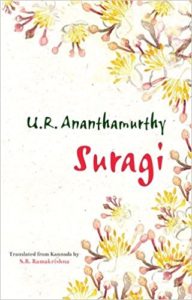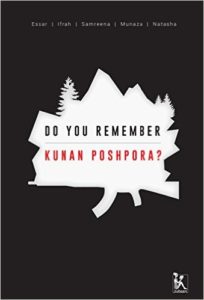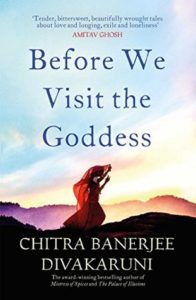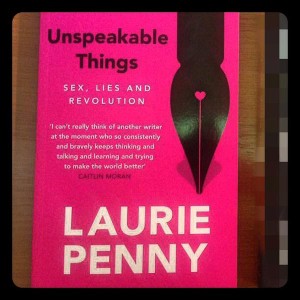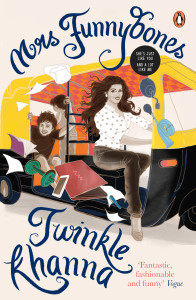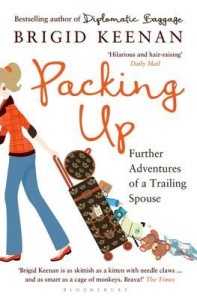“Where No Daffodils Grow” by Sandeep Raina
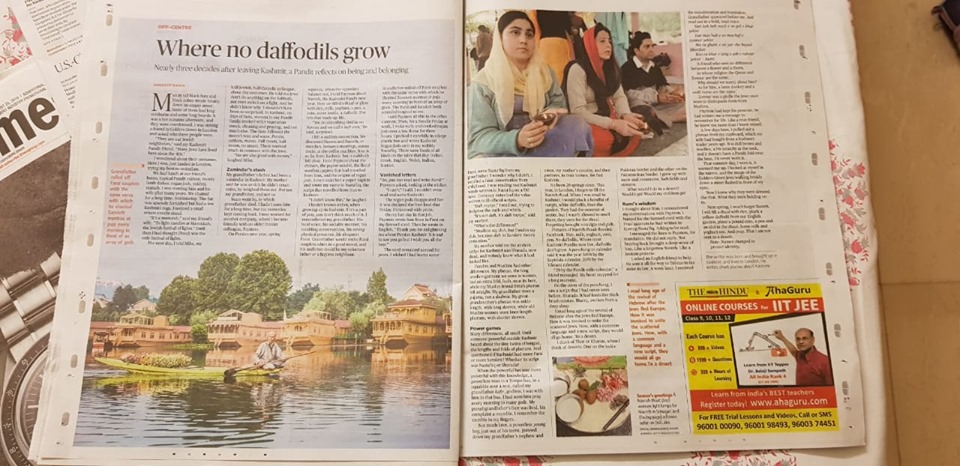
On 24/25 August 2019, Sandeep Raina’s “Where No Daffodils Grow” was published in the Hindu Literary Supplement. Here is the link. Given the space restrictions in print, the article had to be edited. Reproduced below with the kind permission of the author is the unedited version.
Sandeep Raina was born and brought up in Baramulla, Kashmir. He studied engineering in Srinagar, and when in 1990 militancy gripped the Kashmir valley, he finished his education and left for Delhi. He lived in Delhi for 10 years and then in Istanbul for 3 years before moving to Surrey, England where he has been living for the past 15+ years with his wife and 3 children. Sandeep’s wife is a doctor in Surrey, their daughter studies medicine at the University of London, and their twin sons are studying engineering at the Cambridge University.
Sandeep has worked as a senior engineering executive in mobile telecoms for the past 28 years and travels globally for his work. As a mobile telecoms evangelist, he has been invited to speak at many conferences across Europe and the USA, and has published numerous professional articles. Currently, he works for a French-American telecommunications software company in London.
Sandeep has written a novel based on Kashmir, which took him over 11 years to write. The reason to write a novel was that it worked as a slow cathartic process to counter the traumatic and violent experiences of the early-90s Kashmir, and the harsh life of being a migrant/refugee in Delhi. As part of his life and travels outside Kashmir, he has acquired different perspectives of the Kashmir conflict. Through his writing about the Kashmiri people, of all communities, caught in the long-drawn, brutal conflict, he aims to present a better understanding of their predicament.
Sandeep has also published short stories about Kashmir, which reflect the exchanges with people caught in conflicts like Kashmir. They not only highlight the broken relationships, the loss of trust, the rising communal politics of Kashmir and India, but also offer introspection and a hope for the communities that have been disadvantaged because of the strife.
His stories have been published in several magazines and papers, including, The Hindu, The Guardian, The Telegraph, and The Times of India/The Economic Times.
****
Men in tall black hats and flowing black robes strode briskly down an empty street. Some of them had long side burns and some had long beards. It was a summer afternoon, hot, and they were quite overdressed. I was visiting a friend in Golders Green in London and asked him what was going on, who were those people, why the costumes?
“Nothing, they are our Jewish neighbours back from a synagogue,” said the Kashmiri Pandit friend. “Many Jews live here since the 40s.”
Why were they dressed in such a pronounced manner? I wondered. Here was I, trying my best to assimilate, just landed in London. It didn’t make sense.
We had lunch at our friend’s home, typical Pandit cuisine, mostly lamb dishes: rogan josh, yakhni and matsch. I had met him and his wife after many years. We chatted for long on the table, reminiscing. The flat was sparsely furnished but had a few Kashmiri rugs. I noticed a small ornate candle stand in the window and asked what it was.
“It is a menorah,” said my friend’s wife. “To light candles in the Jewish festival of lights, Hanukkah.”
Until then I had thought Diwali was the only festival of lights.
“Everybody in this apartment building is a Jew, most of them old,” said my friend. “And they are very nice people.”
The next day, I told Mike, my colleague in office, about the Jews in costume. Mike was a small young man, who once had said that being Jewish, Catholic and French was the worst one could be in England, and he was all of them. One of his parents was French and Catholic, the other English and Jewish.
“There are other interesting things that we do, such as not doing anything on Sabbath,” he laughed. “Not even switching on a light.”
“Why?” I said.
He didn’t want to explain or didn’t know.
I shouldn’t have been so surprised. In Kashmir, on days of fasts, women in our Kashmiri Pandit family cooked strict vegetarian meals, cleaning and praying, and not doing much else. And the fasts followed the moon’s wax and wane. Punim, aetham, mavas. On full moon, mid moon, and no moon. There seemed to be much in common with the Jews.
“We are also really good with money,” laughed Mike.
My grandfather’s father had been a zamindar, a landowner, in Kashmir. My mother said that he was so rich that he didn’t count coins, he weighed them out of hand balances. But, my grandfather was not rich, nor us. My mental comparisons with the Jews ended at this thought.
Years went by. In which my grandfather died. I hadn’t seen him for a long time, but his memories kept on coming back to me in many different ways. By now we had moved into a new house, and I worked for a different company, in a different town in England, where I became friendly with an older Iranian colleague, Paymon.
It was the Persian new year, on spring equinox, when the day equals night, and the opposites balance out, when I told Paymon about Navreh, the Kashmiri Pandit new year. How on the eve, we filled a thaal, a deep plate with rice, milk, yogurt, a pen, a coin, some lentils, a daffodil. Bits that made life.
“We do something similar on Navroz, and we call it haft seen,” he said, surprised.
I felt a sudden connection build. We discussed Navroz and Navreh in snatches between meetings, across our office desks, on the coffee machine. Iran is so far from Kashmir, but it suddenly felt close. I told Paymon about the chinars, the papier-mâché, and the floral woollen carpets that had travelled from Iran, and the origins of rogan josh. Things began to tumble out. I even snatched a paper napkin and wrote my name in Nastaliq, the script that had travelled from Iran to Kashmir.
“I didn’t know this,” he laughed.
I didn’t know either, when growing up in Kashmir. If it’s a part of you, you don’t think much of it. I remembered my grandfather. I remembered his bold loud voice, his very sociable manner, his rambling conversations, his strong physical presence, his eloquent Farsi.
Grandfather used to recite Farsi couplets when he was in a good mood, when he had an audience, which could be my reluctant father or a hapless neighbour who had chanced to step by. Grandfather rolled off the Farsi couplets with the same verve as chanting mantras in Sanskrit, when he did his puja every morning, with lots of flower petals and incense sticks, in front of an array of gods. I was small, the Farsi and the Sanskrit both sounded magical to me, inspiring awe.
I told Paymon all this in the office canteen, and he listened to me with an older man’s patience.
My euphoria was unabated. For a Foodie Friday in the office, I woke up early and cooked rogan josh in the morning over low flame for three hours. My wife wasn’t happy that I hadn’t let her cook. I packed the rogan josh carefully in a large plastic box, with a sticker on top and wrote- Kashmiri Rogan Josh in my wobbly Nastaliq, and sped to office, just in time for lunch. My colleagues had already begun eating, and there were foods of all kinds on the large canteen table. Italian, Greek, English, Brazilian, Welsh, Indian, Iranian. The rogan josh was late. Then Paymon saw me.
“So, you can read and write Farsi?” said Paymon, looking at the sticker, asking me to put some rogan josh on his plate.
“I can’t,” I said. I couldn’t even read and write Kashmiri.
Rogan josh disappeared fast, everyone ate it. It was declared the best cooked food on that Friday. I brimmed with pride.
When I left that job, on my last day, Paymon wrote four lines in Farsi on my farewell card. Under those he wrote in English: Thank you for enlightening me about Persian Kashmir. It has been great talking with you. It is sad to see you go but I wish you all the best.”
I think Paymon said something about those Farsi words in the card, but in my farewell hurry, I didn’t hear too well.
The card remained unread for years. Later, I wished I had learnt some Farsi, some Nastaliq from my grandfather. I wonder why I didn’t. My question took me back to a faint conversation from my childhood. I was reading out two Kashmiri words written in Nastaliq on a ten rupee note. In those days, currency notes in India had the value written in 15 official languages, each in its own script.
“Dah ropiye,” I read out, trying to decipher the curls, whirls, and dots.
“It’s not dah ropiye, its duh ropiye,” said my mother.
“What’s the difference?”
“Muslims say dah, but Pandits say duh, because dah in Sanskrit means cremation. And Muslims bury their dead.”
My mother also told me that the ancient script for Kashmiri was Sharada, now dead, and nobody knew what it had looked like.
Pandits and Muslims had other differences too. I was aware of some. My pheran, the long woollen garment that I wore in winters, had an extra fold, ladh, near its hem, while Bitta, my Muslim friend’s pheran fell straight. My grandfather wore a pajama, not a shalwar. My great grandmother’s pheran was ankle-length, with long sleeves, while old Muslim women wore knee length pherans, and shorter sleeves.
Many differences, all small. Until someone powerful outside Kashmir, heard about the tiny twists of tongue, the lengths and folds of pherans. And questioned if Kashmiri had more Farsi or more Sanskrit? Whether its script was Nastaliq or Sharada? When the powerful became more powerful with this knowledge, a powerless man in a tempo bus, after a squabble over a seat, called my grandfather a kafir, godless. Hurled the word like a weapon. I was with my grandfather in that bus. I had seen him pray to God every morning, in fact, many gods. My proud grandfather’s face was livid, his complaint to the bus driver a mere mumble. I remember my own inertness, the tremble in my fingers.
Not much later, a powerless young boy, just out of teens, gunned down my grandfather’s nephew and niece, my mother’s cousins, with their partners, inside their home. We fled Kashmir.
It’s been 29 springs since that happened. This year, in London, I forgot to fill up the Navreh thaal. Or look up the new panchang, the Hindu calendar book, which my mother posts from India every spring. On Navreh eve, when I was small in Kashmir, I would run out to pluck a handful of nargis, white daffodils, that grew in our garden. They had the sweetest of scents, but I wasn’t allowed to sniff; they were meant for God. And on Navreh morning, when the April air pinched my winter-chapped cheeks, I would wear a new kurta-pajama. Forgetting the thaal has brought sweet nostalgia and tremendous guilt.
Pictures of Navreh thaals flooded Facebook, on cue. Rice, milk, yogurt, coin, pen. No daffodils. Where most Kashmiri Pandits now live, daffodils don’t grow. A panchang said the year is 5094 by the Saptrishi calendar, 2075 by the Vikrami calendar.
“29 by the Pandit exile calendar,” a friend messaged. My heart stopped for a long moment.
On the cover of a panchang, I saw a script that I had never seen before. Sharada. It had fonts like thick brush strokes or like engravings on stone. Blurry, awoken from a deep sleep.
I had read a book long ago about the revival of Hebrew after the Jews had fled from European towns. How Hebrew was invoked to string the scattered Jews. How they would all go home, with a common language and a new script to a land they could call their own. In a desert.
I think of Thar or Kharan, when I think of deserts. One on the India-Pakistan border and the other on the Pakistan-Iran border. I grew up with snow and mountains, I grew up with lush fields, streams and lakes. What would I do in a desert? What if someone powerful traced my roots to the Aryan Iranians? And sent me to Kharan in Balochistan. Would I go? Would my children go? Would my children’s children go?
I am sure the Jews had said this too.
I thought about Iran. I remembered my conversations about Navroz and Navreh with Paymon. I hunted for the farewell card from my last job and found it in a stack of birthday cards that our children had given me over the years. Among dozens of messages written in English was the quatrain written by Paymon in Farsi, in flowing Nastaliq. Asking to be read.
I messaged a photo of the lines to Paymon, asking him if he could translate it for me. Paymon did not reply, I don’t know why. I had thought Paymon would be a friend for life. Friendship’s a promise. I thought of who else could help me: Grandfather. But he was not around anymore to fill me with the awe and magic of his Farsi. Not hearing back from Paymon, not able to read his message brought a deep sense of loss. Like a forgotten Navreh. Like a broken promise.
I asked an English friend to help me. He sent a photo of the Farsi message, all the way to Tehran to his sister-in-law. A week later, I received the transliteration and the translation in my inbox. Grandfather appeared before me. And read out in a bold, loud voice:
Yari keh beh nazd e oo gol o khar yekist
Dar maz hab e oo mos haf o zonnar yekist
Ma ra gham e on yar che bayad khordan
Koo ra khar e lang o asb e rahvar yekist
(Rumi)
“A friend who sees no difference between a flower and a thorn,
In whose religion, the Quran and Zonnar are the same,
Why should we worry about him?
As for him, a lame donkey and a swift horse are the same.”
Zonnar used to be a girdle which Jews wore to distinguish them from Muslims, long back in time.
Paymon had not forgotten, he had kept his promise, he had written me a message to remember for life. Like a true friend, he knew me more than I knew myself.
A few days later, I pulled out a pheran from my clothes cupboard, which my wife had bought from a Kashmiri trader many years ago. It is dull brown and woollen, a bit scratchy at the neck, and it does not have a Pandit fold near the hem. I had never worn it.
That summer day, I wore it. It warmed me up. I looked at myself in the mirror, and the image of the Golders Green Jews walking briskly down a street flashed in front of my eyes. Now I knew why they were dressed like that.
What they were holding on to.
Next spring, I won’t forget Navreh. I will fill up a thaal with rice, pluck a yellow daffodil from our English garden, place a pound coin, a pen and an idol of a god in the thaal. Some milk and yogurt too. And pray. That I’m not sent to a desert.
Note: Names changed to protect identity
17 August 2019

